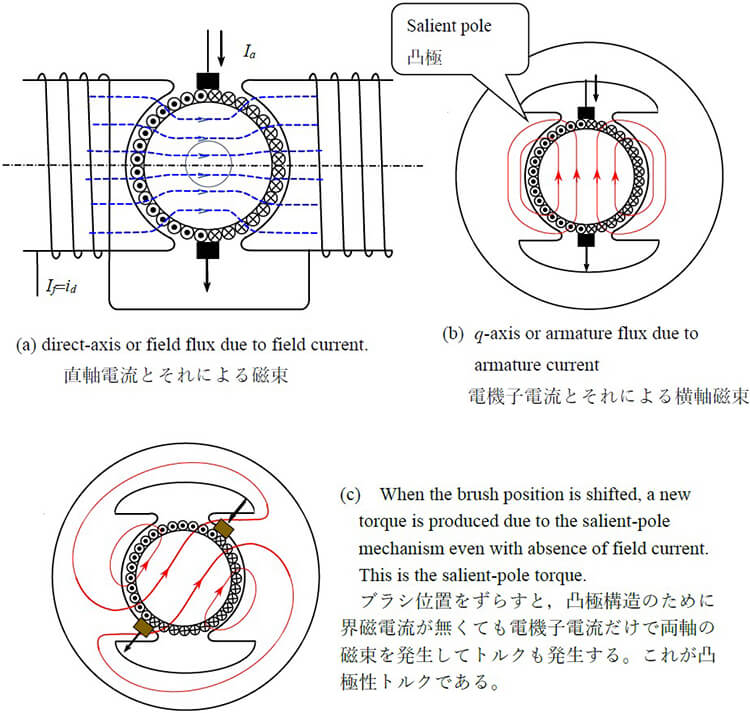Glossary of Motor Terms
Salient-pole torque
This is the torque due to the salient-pole structure and armature current, even when there is no field flux, in a DC motor. Figure (a) shows the magnetic flux in blue due to field current and windings. This current and flux are referred to as direct-axis current and direct-axis flux, respectively. Figure (b) shows the armature current and flux due to it, these being called the quadrature-axis current and quadrature-axis flux, respectively. More succinctly they are referred to as the d-axis or q-axis. By the interaction of both axes’ currents or flux, a torque T is generated. This is given by
T=p(Ld-Lq)idiq
where
p = number of pole pairs,
Ld = d-axis inductance
Lq = q-axis inductance
id = d-axis current, and
iq = q-axis current.
Figure (c) shows that a new torque is produced even when no field current is supplied but the brushes are oblique, because the q-qxis current produces a d-axis flux due to the salient-pole structure. This is the salient-pole torque. In a brush type DC motor this is not employed in normal applications because of strong sparks between the brushes and commutator. In a brushless DC motor using an expensive permanent magnet, the salient-pole structure is employed to reduce magnet volume.

Term List (S)
- Salient-pole torque
- Salient-pole rotor-stator
- Sensorless drive
- Separately-excited DC motor
- Shaft, shapes of
- Simulation
- Sinusoidal voltage
- Skew,Skewed slots
- Slip ring
- Slot liner
- Slotless rotor
- Slot-pole combination
- Slots and teeth
- Small electrical motor
- Solenoid
- Space factor, Slot fill factor
- Speed control
- Speed variation rate
- Spindle motor
- Squirrel cage rotor
- Squirrel-cage induction motor
- Stall torque
- Starting torque
- Sturgeon's motor
- Switched reluctance motor
- Switched reluctance motor, Early
- Switching elements
- Synchronous speed

